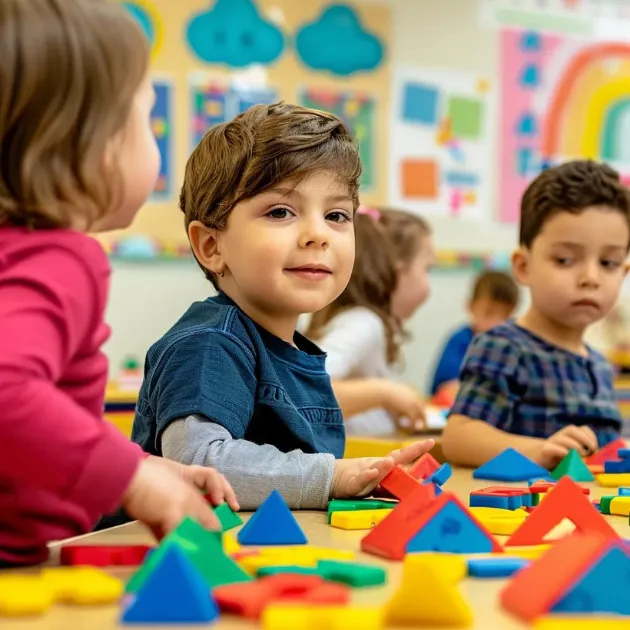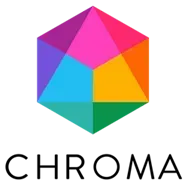
Learning Shapes for Children: A Complete Guide to Shape Recognition and Early Development
Learning Shapes for Children: A Complete Guide to Shape Recognition and Early Development
Early shape recognition unlocks critical cognitive, spatial, and language skills by age five, setting the foundation for future math and reading success. This guide reveals why identifying circles, squares, and triangles matters, outlines the essential 2D and 3D shapes young learners should master, and shares engaging games, crafts, and tips for parents and educators. You’ll discover developmental milestones, practical activities, and real-world connections that transform shape learning into a dynamic, confidence-building journey.
Why Is Learning Shapes Important for Children’s Development?
Shape learning is the process of recognizing and naming geometric figures, which supports multiple aspects of early development: it boosts spatial reasoning, lays groundwork for math concepts, enriches visual literacy, and sharpens problem-solving skills. For example, when toddlers sort blocks by shape, they exercise fine motor control while mapping physical objects to abstract categories. This multi-sensory approach leads naturally into more complex geometry and critical thinking exercises.
How Does Shape Recognition Enhance Spatial Awareness?
Shape recognition develops a child’s ability to mentally visualize objects and their orientation in space. By matching circular lids to round holes or fitting triangular pieces into puzzles, children refine mental rotation, distance estimation, and directional language—skills that predict later success in STEM subjects and everyday navigation.
The Importance of Spatial Reasoning
Shape recognition is crucial for developing spatial reasoning skills in children, which are essential for success in STEM fields. Activities like sorting blocks and fitting puzzle pieces help children understand spatial relationships, mental rotation, and directional language.
National Association for the Education of Young Children (NAEYC), "Spatial Reasoning in Early Childhood" (2022)
This research supports the article's claim that shape recognition enhances spatial awareness and prepares children for future academic success.
In What Ways Do Shapes Build Foundational Math Skills?
Identifying shapes introduces basic geometry and counting principles. Recognizing that a square has four equal sides and a rectangle has four sides of two different lengths creates an early understanding of measurement and symmetry. These geometric foundations seamlessly transition into counting edges, sorting objects by attributes, and recognizing patterns, all essential for early numeracy.
Shape Recognition and Early Math Skills
Identifying shapes introduces fundamental geometry and counting principles, laying the groundwork for early numeracy. Recognizing attributes like the number of sides and corners in shapes helps children understand measurement, symmetry, and pattern recognition, which are essential for early math skills.
Clements, D. H., & Sarama, J., "Early Childhood Mathematics Education" (2014)
This citation reinforces the article's discussion on how shape learning builds foundational math skills.
How Does Learning Shapes Support Visual Literacy and Language Development?
Shape vocabulary—words like circle, oval, and diamond—expands children’s descriptive language and reading readiness. When a preschooler points out “the heart on this card” or “the star in the sky,” they link visual input to words, enhancing picture-word associations that underpin letter recognition and storytelling skills.
What Are the Broader Cognitive and Problem-Solving Benefits of Shape Learning?
Engaging with shapes through puzzles and building blocks boosts executive function by encouraging planning, hypothesis testing, and error correction. As children figure out how to balance shapes or complete a shape mosaic, they develop flexible thinking and perseverance—abilities that transfer to complex problem-solving throughout life.
What Are the Basic 2D Shapes Children Should Learn?
Basic two-dimensional shapes form the building blocks of early geometry. By exploring flat figures such as circles and squares, young learners link visual characteristics with names and attributes, strengthening pattern recognition and classification skills.
How Can Toddlers Recognize and Learn Circles?
Introducing circles begins with round objects like plates and coins. Toddlers trace circular outlines on paper, roll toy wheels on the floor, and sort coins into slots. These activities guide children to understand that all round shapes share a curved boundary and no corners. Mastery of circles paves the way for distinguishing curves from straight edges in other shapes.
What Are Fun Ways to Teach Squares to Young Learners?
Children learn squares by exploring objects with four equal sides—blocks, windowpanes, and post-it notes. A simple activity is to “square hunt,” where kids find square tiles on a floor. Drawing squares with a ruler or arranging four sticks into a square frame reinforces side equality and right angles, linking geometry to everyday items.
How Do Preschoolers Explore Triangles and Their Sides?
Triangle activities focus on three-sided figures like traffic yield signs and slice-of-pizza shapes. Preschoolers build triangles with sticks or pipe cleaners, compare equilateral versus isosceles forms, and sort paper triangles by orientation. This hands-on exploration highlights the attribute that triangles always have three sides and corners.
How Can Children Differentiate Rectangles and Ovals?
Rectangles and ovals both feature curved or straight edges but differ in side lengths and corner presence. By tracing books (rectangles) and eggs (ovals), kids learn that rectangles have four sides and four corners, while ovals have one continuous curved line without corners. Contrast drawings on a shared sheet reinforce these distinguishing attributes.
Which Other Basic Shapes Should Kids Know?
Beyond the core 2D shapes, children benefit from recognizing star, heart, and diamond forms, which appear frequently in art and nature.
Below is a comparison of secondary shapes with defining features and common examples:
How Can Advanced Shape Concepts Be Introduced to Children?
As children master basic figures, expanding into three-dimensional forms, polygons, and symmetry activities deepens spatial and mathematical understanding.
What Are 3D Shapes and How Can Kids Explore Cubes, Spheres, and Cylinders?
Three-dimensional shapes have volume, faces, edges, and vertices. Exploring these solids with tangible models—blocks (cubes), balls (spheres), and cans (cylinders)—helps children grasp depth and perspective.
Handling 3D models builds tactile awareness and connects flat drawings to real-world objects, reinforcing volume concepts ahead of elementary geometry.
How Do Polygons and Symmetry Enhance Shape Understanding?
Polygons are closed figures with multiple straight sides, such as pentagons and hexagons. Learning about symmetry axes—imaginary lines dividing shapes into mirror images—promotes recognition of balance and proportion. Activities like folding paper polygons or drawing lines of symmetry deepen children’s appreciation of geometric structure.
How Can Patterns and Symmetry Be Used in Shape Learning Activities?
Creating repeating shape sequences or mirror-image drawings boosts pattern-recognition skills critical to algebraic thinking. For example, arranging alternating triangles and squares on a string or painting one half of a shape and reflecting it on the other develop both fine motor control and mathematical reasoning.
What Are Effective Activities and Games for Teaching Shapes to Children?
Interactive play and hands-on projects turn shape recognition into memorable experiences that reinforce concepts through repetition and fun.
Which Interactive Games Help with Shape Sorting and Recognition?
Shape sorting boards, matching memory cards, and digital apps prompt children to identify and place shapes correctly. These games support fine motor skills and visual discrimination while offering immediate feedback. Embedding shape quests in story-driven apps sustains engagement and deepens recognition.
What Hands-On Crafts Encourage Shape Exploration?
Crafts like making a shape collage or constructing a cardboard shape town invite children to cut, glue, and decorate figures. These activities foster creativity, improve scissor skills, and link geometric vocabulary to artistic expression, reinforcing shape attributes in a memorable context.
Which Educational Videos and Songs Are Best for Shape Learning?
Animated videos and catchy songs—featuring characters tracing and naming shapes—enhance auditory and visual learning. Short clips that show real objects morphing into shapes boost retention and introduce children to shape vocabulary in a narrative format, supporting diverse learning styles.
How Can Storytelling and Building Blocks Support Shape Learning?
Story-based play that casts shapes as characters (e.g., “Square the Builder” or “Circle the Explorer”) creates emotional connections to geometry. Meanwhile, block-building challenges that require constructing specific shapes on a baseplate sharpen spatial reasoning and turn abstract concepts into tangible achievements.
How Can Parents and Educators Support Shape Learning at Home and School?
Consistent, shape-focused environments and structured guidance accelerate recognition and application of geometry concepts.
What Are Practical Tips for Integrating Shapes into Daily Routines?
Start each day with a quick “shape scavenger hunt” at home—identify a circle clock, a rectangular door, and a triangular slice of toast. During snack time, discuss the shapes of fruits and plates. These brief, intentional moments transform routine tasks into ongoing shape lessons.
How Can a Shape-Rich Learning Environment Be Created?
Designate areas with shape posters, tactile shape mats, and labeled bins for shape toys. Rotate materials regularly—introduce 3D shape blocks one week and pattern stencils the next—to maintain novelty and reinforce a broad range of geometric concepts.
What Structured Lesson Plans Help Teach Shapes Effectively?
Effective lesson plans begin with an introduction to shape names and attributes, followed by hands-on exploration, guided practice (e.g., shape tracing), and independent application (shape hunt or drawing). Incorporate assessment checkpoints—such as asking children to sort a mixed group of shapes—to track progress and adjust instruction.
At What Age Should Children Learn Shapes and How Does Learning Progress?
Shape recognition evolves through predictable developmental milestones, guiding timely instruction and support.
When Do Toddlers Typically Begin Recognizing Basic Shapes?
Children often start distinguishing simple shapes like circles and squares between 18–24 months. They can sort blocks by shape, point out common shapes in books, and attempt simple drawings of circles before age two.
How Does Shape Learning Develop Through Preschool and Kindergarten?
Between ages 3–5, children progress from identifying two or three shapes to naming five or more, comparing attributes, and drawing shapes with increasing accuracy. Kindergartners add concepts like symmetry, pattern creation, and simple 3D recognition to their growing geometric repertoire.
What Are Signs of Successful Shape Recognition in Early Childhood?
Indicators include correctly labeling shapes without prompts, sorting novel objects by shape attribute, using shape terms in conversations, and creating shape patterns independently. These behaviors signal readiness for more advanced geometry and early math instruction.
Where Do Children Encounter Shapes in Everyday Life?
Shapes surround us—in architecture, nature, and daily objects—and recognizing them in context reinforces learning relevance.
How Can “Shapes in the Real World” Activities Boost Learning?
Going on a “shape walk” in the neighborhood encourages children to photograph or sketch shapes found in windows, street signs, and playground equipment. These outings link abstract figures to concrete examples, cementing the connection between geometry and the environment.
What Common Objects Help Teach Shape Recognition?
Household items like clocks (circles), windows (rectangles), traffic signs (triangles), and fruit slices (ovals) serve as ready-made teaching tools. Pointing out these shapes in conversation helps children generalize shape concepts across varied contexts.
How Does Recognizing Shapes in Environment Support Cognitive Development?
Identifying shapes in surroundings strengthens visual discrimination, environmental scanning, and vocabulary use. As children notice shapes on cereal boxes or road signs, they practice instantaneous categorization—a cognitive skill that underlies reading fluency and mathematical reasoning.
Children who master shape recognition gain confidence and curiosity, paving the way for seamless transitions into formal math, science, and art lessons. By weaving shape learning into play, routines, and real-world exploration, parents and educators create a rich environment that boosts spatial reasoning, vocabulary, and problem-solving—skills that resonate throughout a child’s academic and daily life. Explore interactive games, printable activities, or classroom guides to continue this engaging geometric journey.

Infant Care
Nurturing and caring environment for your little one's growth.

Toddler Care
Nurturing growth and discovery in a safe, loving environment.

Preschool
Nurturing creativity and growth in a safe, engaging environment.
Ga Pre-K Lottery
Unlock educational opportunities with our Ga Pre-K Lottery program.
AfterSchool
Enriching and safe after-school care tailored to children's growth.
Kindergarden
Nurture young minds with personalized attention and engaging activities.
Testimonials
Our Parents love us
Here's some of what they had to say
My daughter has been going here for a year. She and we love it! The staff is very kind and helpful. They listen to my concerns and always help her and engage her with activities that fit her abilities instead of just her age! We have restricted diet; they work with us to accommodate her. Chroma has become our second family!
Khawla M.

My daughter loves it here. She loves all her teachers, she learns something new every day. We love the activities they provide our child with.
Jessica B.

